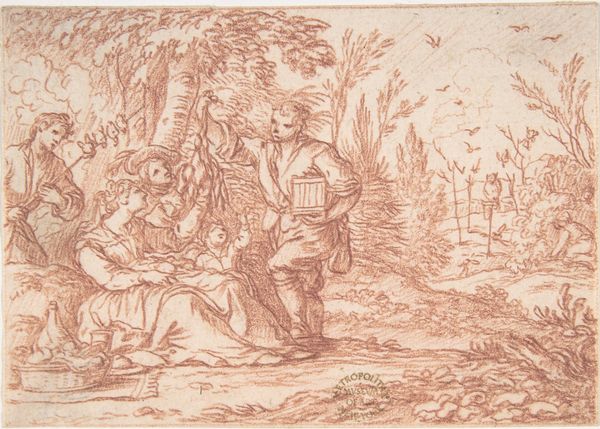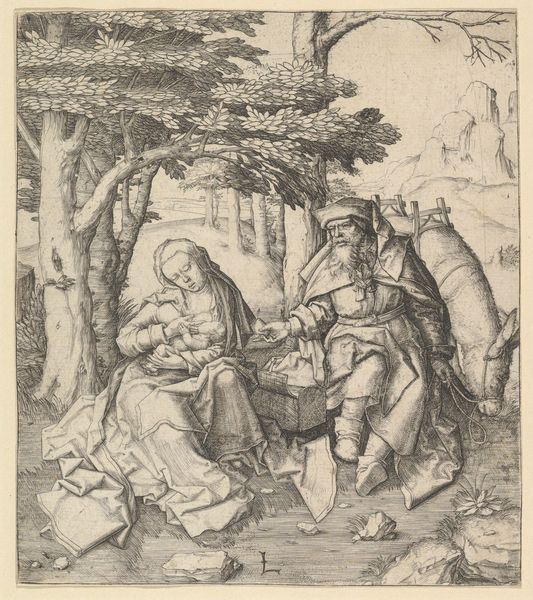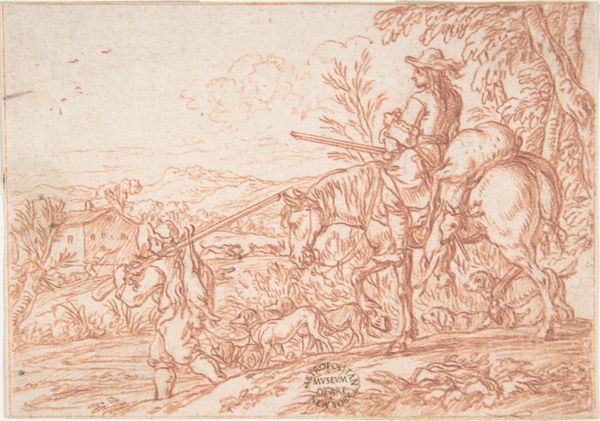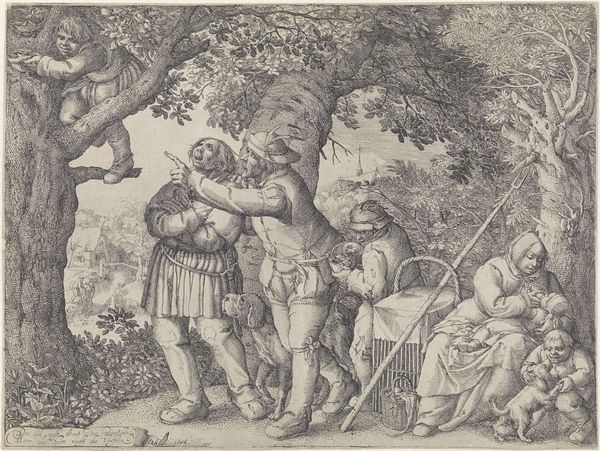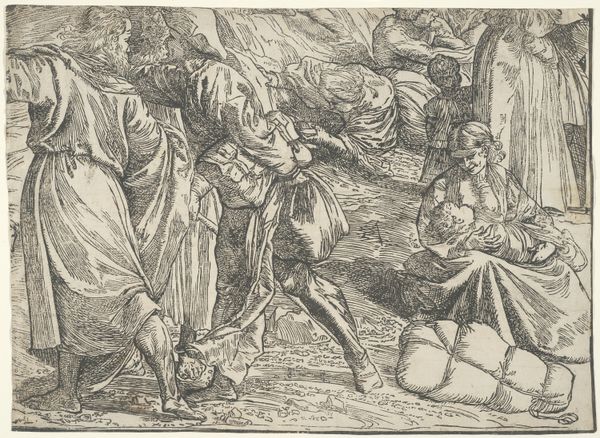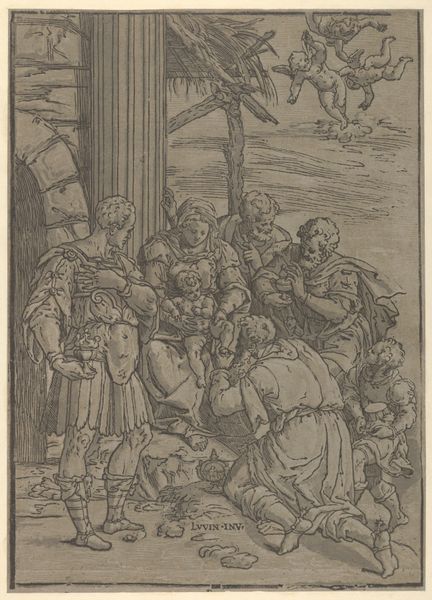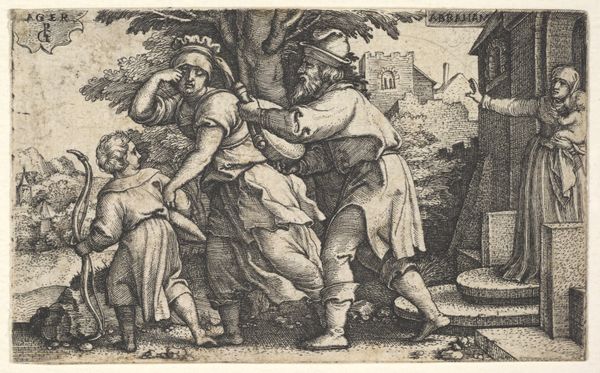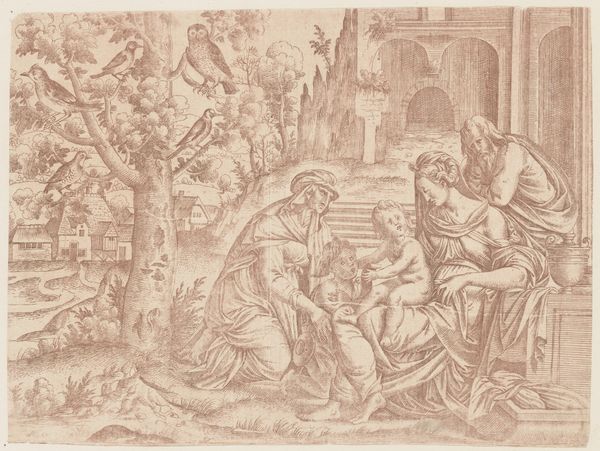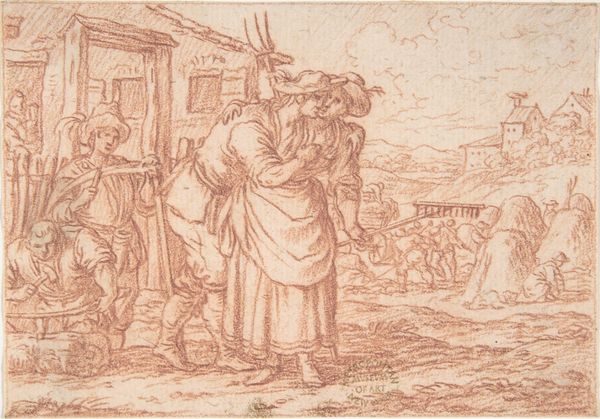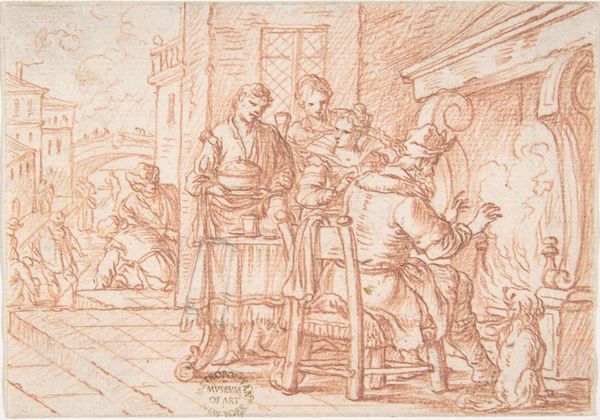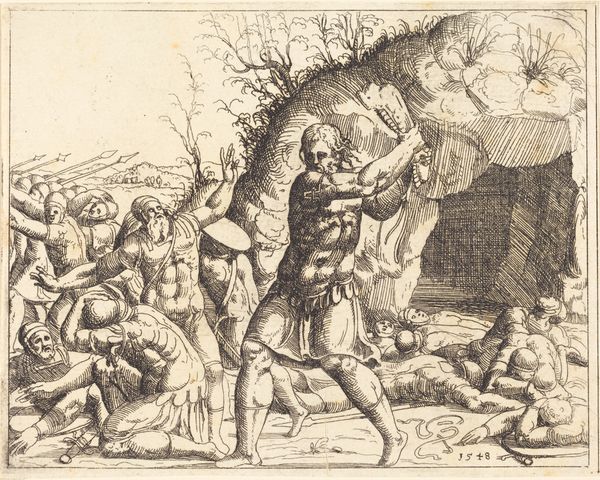
March (one of a series representing the labors of the months) 1690
0:00
0:00
drawing, print, ink
#
drawing
#
ink drawing
#
narrative-art
#
baroque
# print
#
landscape
#
figuration
#
ink
#
genre-painting
Dimensions: 3 5/16 x 4 3/4 in. (8.4 x 12.1 cm)
Copyright: Public Domain
Curator: I see a drawing dominated by these russet ink lines… it looks… rather tense, doesn’t it? Editor: It does indeed. What strikes me is the clear Baroque dynamism even within this medium, ink on paper. This is Jonas Umbach's "March," created around 1690, and part of a series illustrating the Labors of the Months. Curator: Labors is right! Just look at them. You’ve got some people wrestling with, what, tree roots? And others lugging what looks like a season's worth of firewood? Someone over there seems to be flagging a ride out of there. It feels a bit… chaotic. Editor: Consider how Umbach uses the formal structure to communicate this 'chaos' as you call it. The composition employs dynamic asymmetry, moving from the implied narrative in the background toward the entangled, laborious actions at the front. This evokes both a genre scene, emphasizing daily toil, and perhaps even allegorical symbolism of the month of March in early modern Europe. Curator: Allegorical? Well, maybe that bearded guy leaning back observing it all has some sort of divine wisdom. Still, the overriding impression is one of—excuse me—utter, hard work. So the material here is literally dirt and wood, which these people are grappling with… that is pretty visceral. Editor: It’s Umbach’s clever employment of form to elicit these ideas of 'hard work' as you state that I find interesting. Observe the tonality—it reinforces this labor, creating a strong contrast that directs the viewer to these scenes, creating the intended emotional impact. Curator: Makes sense, I suppose, considering these 'Labors' were aimed at reminding us how necessary daily grind really is, right? I suppose in those times it would serve as some kind of reminder about the dignity of work and nature or whatever... something we could still use some more of in our own time. Editor: Precisely, it offers a reflection on humanity’s symbiotic relationship with nature. By studying it we can develop a comprehensive understanding of a universal theme as it’s being expressed through the masterful elements of Baroque aesthetic sensibilities. Curator: Hmmm... yes, and now when I look again, I get what you are saying... like it's also kind of about human dignity… I dig it. Editor: The formal analysis illuminates the thematic intentions rather nicely, doesn't it?
Comments
No comments
Be the first to comment and join the conversation on the ultimate creative platform.
